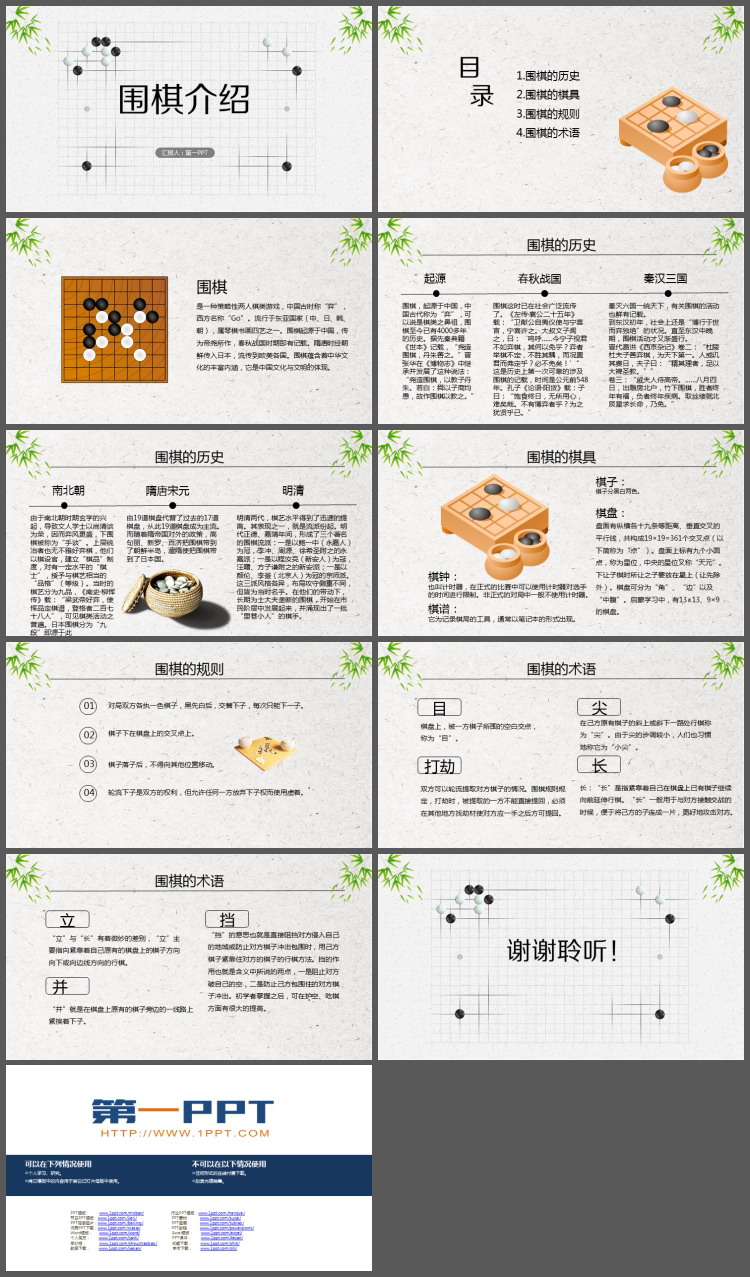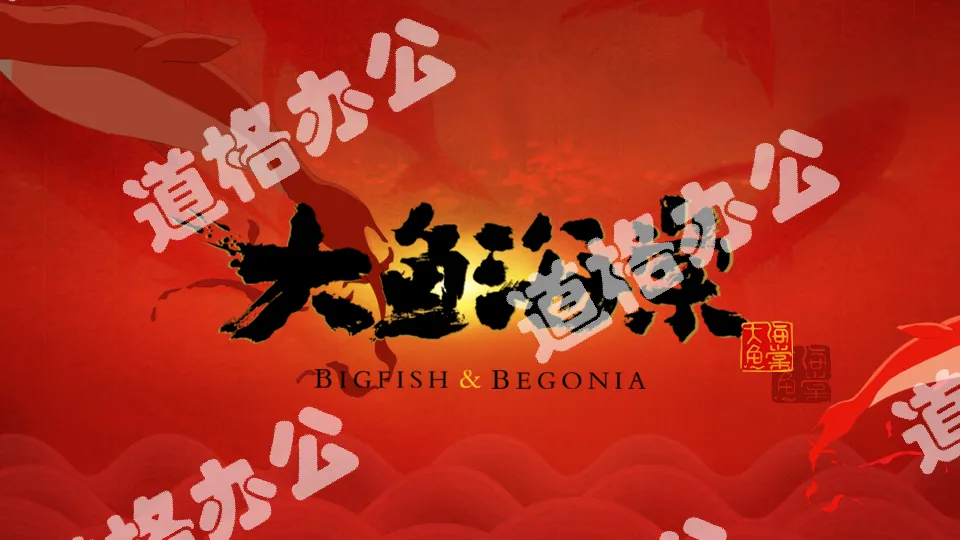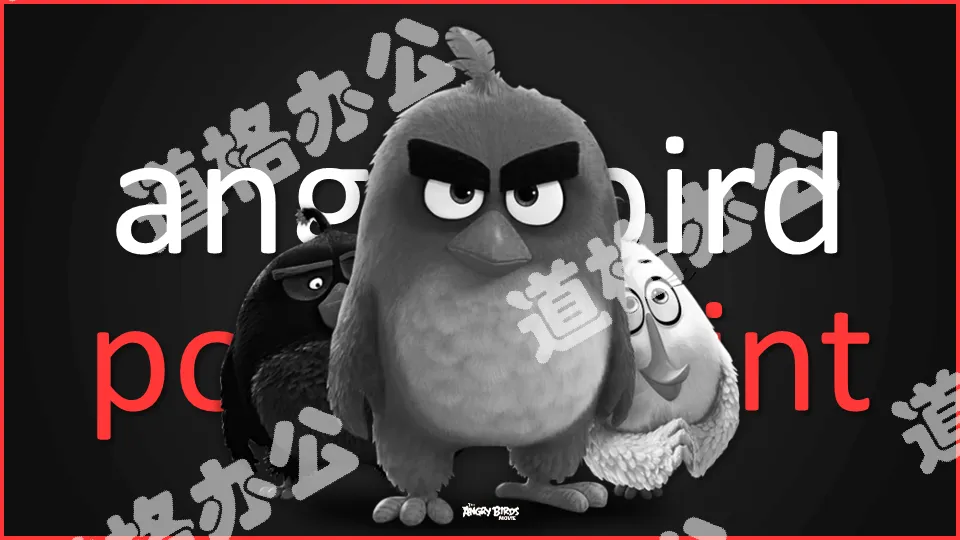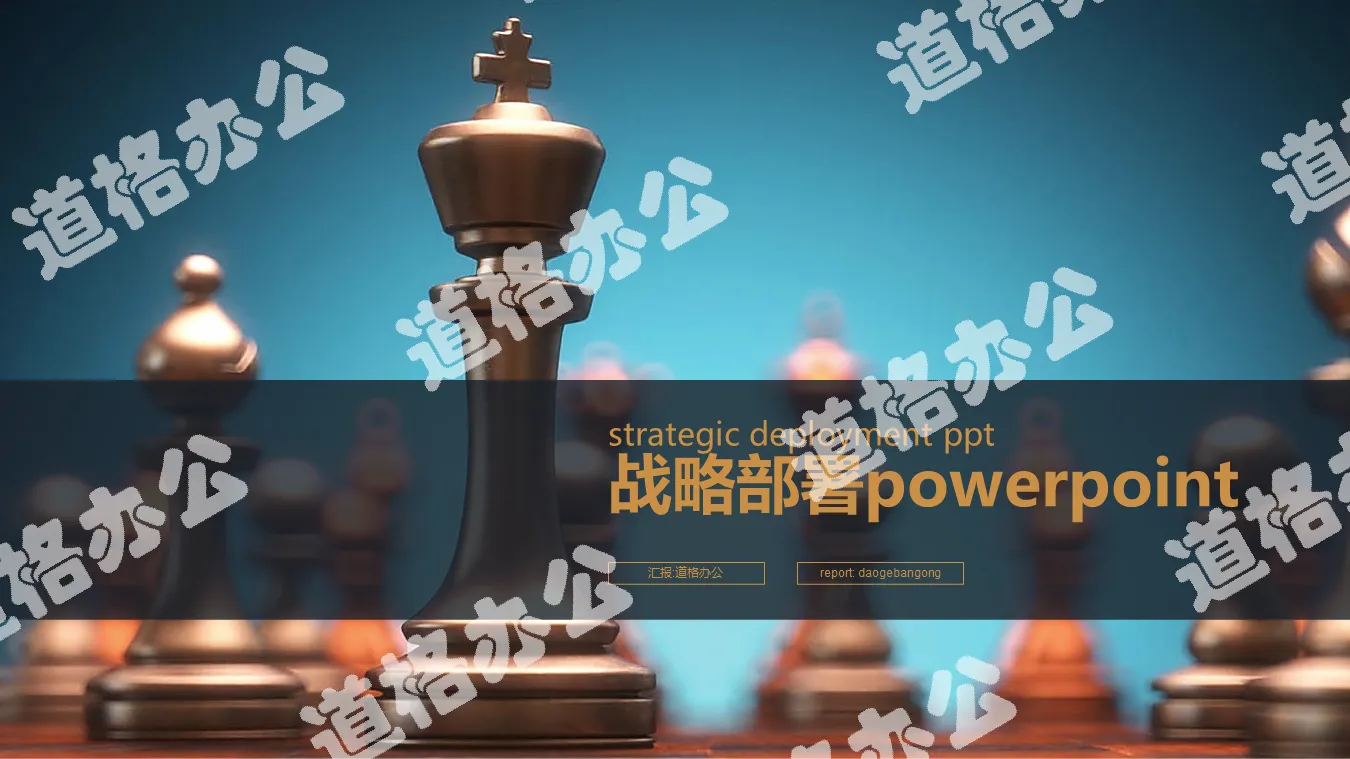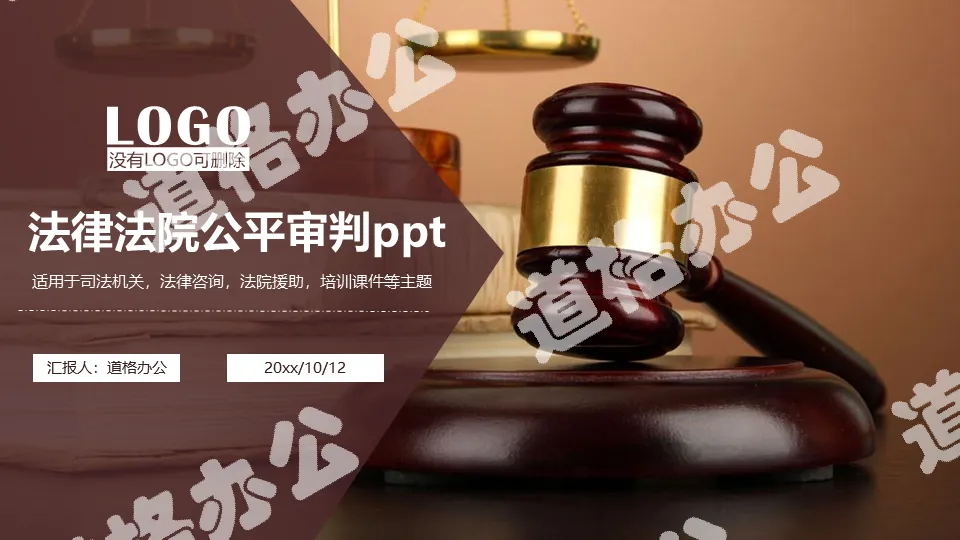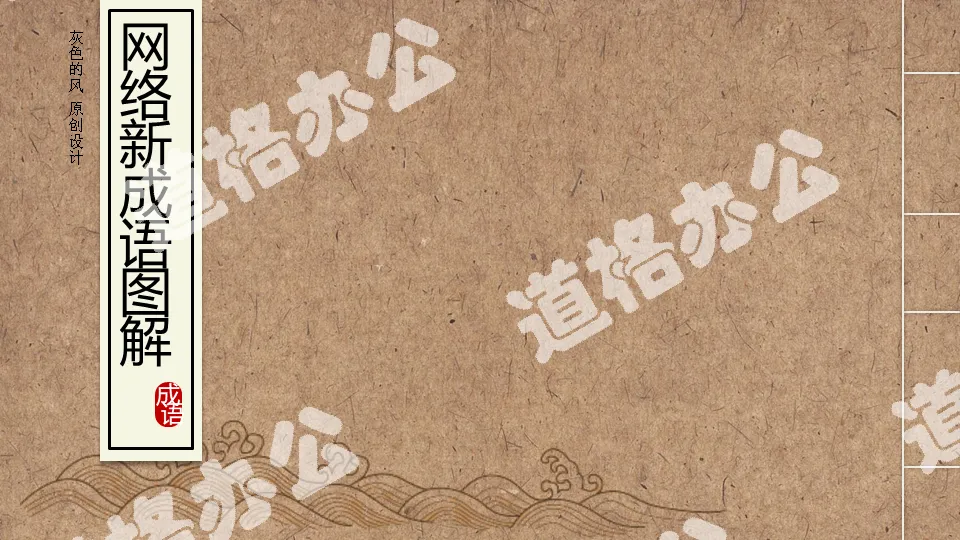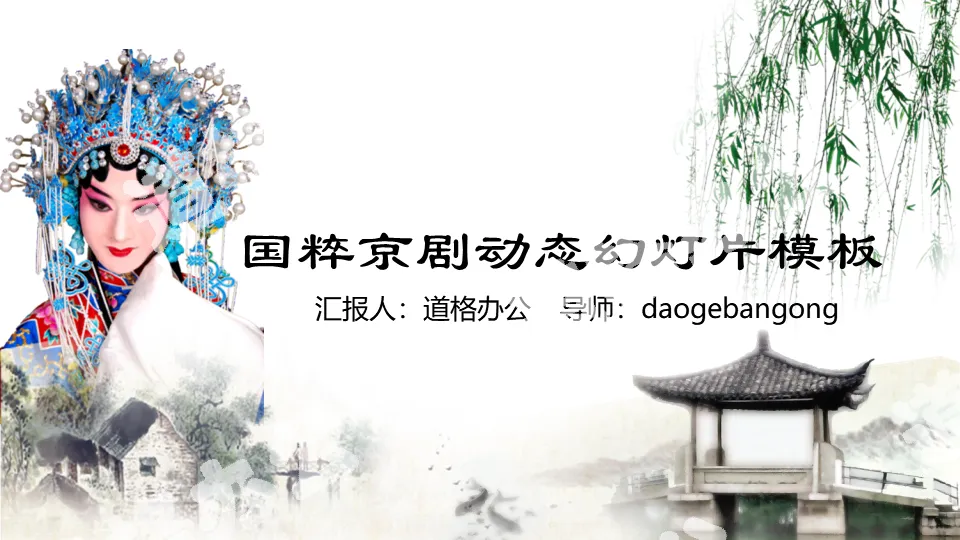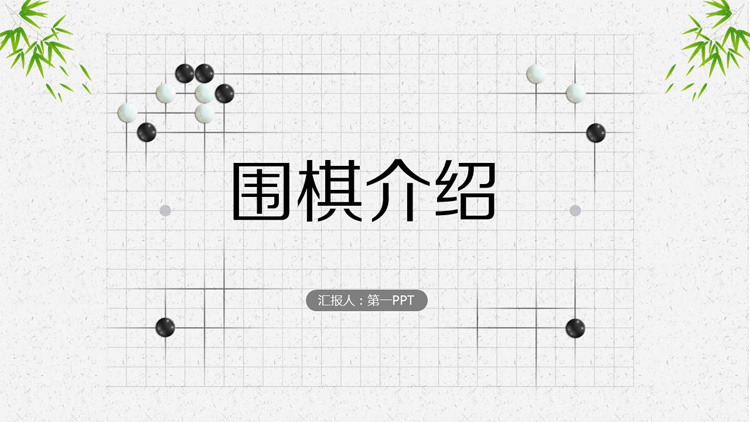
| Category | Format | Size |
|---|---|---|
| Other PPT | pptx | 6 MB |
Description
This is a set of PPT introducing the basic knowledge of Go in a fresh and elegant Chinese style, with a total of 10 pages;
The PPT is designed and produced in Chinese style. The PPT cover uses classical paper and fresh bamboo leaf background pictures. Fill in the middle with the PPT title introducing the basics of Go. The interface is fresh and elegant.
The content page of the PowerPoint template uses multiple Go pieces to match the introductory text layout.
PPT content introduction to the basic knowledge of Go:
Go is a strategic two-player chess game. It was called "Yi" in ancient China and "Go" in the West. Popular in East Asian countries (China, Japan, South Korea, and North Korea), it is one of the four arts of chess, calligraphy, and painting. Go originated in China and is said to have been created by Emperor Yao. It was recorded during the Spring and Autumn Period and the Warring States Period. During the Sui and Tang Dynasties, it was introduced to Japan via Korea and spread to European and American countries. Go contains rich connotations of Chinese culture, and it is the embodiment of Chinese culture and civilization.
1. History of Go
origin
Go, originated in China, was called "Yi" in ancient China. It can be said to be the originator of chess. Go has a history of more than 4,000 years. According to the pre-Qin classic "Shiben", "Yao made Go and Danzhu was good at it." Jin Zhanghua inherited and developed this saying in "Natural History": "Yao made Go and taught his son Danzhu. Ruobai: Shun I think Zi Shang is stupid, so I pretend to play Go to teach him."
Spring and Autumn Period and Warring States Period
Go has been widely spread in society at this time. "Zuo Zhuan·Xianggong Twenty-Five Years" records: "Wei Xiangong spoke to Ning Xi from the Yiyi envoy, and Ning Xi agreed to it. When uncle Wenzi heard about it, he said: 'Wow... Now Ningzi regards you as a chess player. Why is it inevitable? The player is uncertain about the game and is unable to beat his partner, but the situation is that the king is undecided? It is inevitable!'" This is the first reliable record involving Go in history, and the time is 548 BC. Confucius's "The Analects of Confucius Yang Huo" contains: Confucius said: "It is difficult to have a full day without any intention. Is there no one who plays games? It is still a virtuous thing to do so."
Qin and Han Dynasties
Qin destroyed the six kingdoms and unified the world, and there are few records of Go activities.
By the early years of the Eastern Han Dynasty, the society was still in a situation of "doing well in the world but being alone in the game". It was not until the middle and late Eastern Han Dynasty that Go became more and more popular.
Volume 2 of "Xijing Miscellaneous Notes" by Ge Hong of the Jin Dynasty: "Master Du Ling is good at playing chess and is the best in the world. People may ridicule him for wasting his time, but the master said: "Those who are good at their principles can be of great benefit to the holy religion. ""
Volume 3: "Mrs. Qi served Emperor Gao. ... On August 4th, she went out to the north door of the carved house and played Go under the bamboo. The winner will be blessed all year round, and the loser will be sick all year round. Take a silk thread and point it to the North Star to pray for long life, and you will avoid it."
Southern and Northern Dynasties
Due to the rise of metaphysics in the Southern and Northern Dynasties, literati scholars took pride in practicing pure talk, so the game became more popular. Playing Go was called "hand talk". The upper-class rulers also enjoy playing chess. They set up officials based on chess and established a "chess quality" system. For "chess players" with a certain level, they awarded "character" (grade) equivalent to their chess skills. At that time, chess skills were divided into nine levels. "The Biography of Liu Yun in Southern History" records: "Emperor Wu of Liang was very fond of chess and asked Yun Pin to set the chess score. There were 278 people who succeeded." This shows that chess activities are common. This is the origin of the "nine sections" of Japanese Go.
Sui, Tang, Song and Yuan Dynasties
The 19-lane chessboard replaced the previous 17-lane chessboard, and since then the 19-lane chessboard has become the mainstream. Following the Sui Empire's foreign policy, Goguryeo, Silla, and Baekje brought Go to the Korean Peninsula, and sent Sui envoys to bring Go to Japan.
Ming and Qing Dynasties
During the Ming and Qing dynasties, the level of chess skills improved rapidly. One of its manifestations is the emergence of various schools. During the Zhengde and Jiajing years of the Ming Dynasty, three famous Go schools were formed: one is the Yongjia school headed by Bao Yizhong (a native of Yongjia) and affiliated with Li Chong, Zhou Yuan and Xu Xisheng; the other is the Yongjia school headed by Cheng Ruliang (a native of Xin'an). Guan, the Xin'an sect affiliated with Wang Shu and Fang Ziqian; one is the Jingshi sect with Yan Lun and Li Fu (from Beijing) as their crowns. These three factions have different styles and different offensive and defensive layouts, but they were all famous players at the time. Under their leadership, Go, which had been monopolized by scholar-bureaucrats for a long time, began to develop among the citizens, and a group of "little people" chess players emerged.
2. Go equipment
piece:
The chess pieces are divided into black and white.
checkerboard:
There are nineteen equally spaced and vertically intersecting parallel lines on the disk, forming a total of 19 × 19 = 361 intersection points (hereinafter referred to as "points"). There are nine small dots marked on the disk, called star positions, and the star position in the center is also called "Tian Yuan". When playing handicap chess, the handicapped son must be placed on the star (except for the handicap). The chessboard can be divided into "corners", "sides" and "center". In enlightenment learning, there are 13×13 and 9×9 chessboards.
Chess clock:
Also called a timer, a timer can be used to limit players' time in formal competitions. Timers are generally not used in informal games.
Chess record:
It is a tool for recording chess games, usually in the form of a notebook.
3. Rules of Go
Both sides in the game each hold a piece of one color, black first and white second, and they play alternately. Only one piece can be played each time.
The pieces are placed at the intersections on the chessboard.
After the chess piece is placed, it cannot move to other positions.
It is the right of both parties to take turns to make a sudden move, but either party is allowed to give up the right to make a sudden move and use a false move.
4. Terminology of Go
Head
On the chessboard, the blank intersection surrounded by one side's pieces is called the "eye".
tip
Playing chess at a point diagonally above or below one's own original chess piece is called "point". Because the steps of the tip are smaller, people also habitually call it "small tip".
long
"Long" means that the chess piece on the chessboard is next to itself and continues to extend forward. "Long" is generally used when fighting with the opponent, so as to connect one's pieces together and attack the opponent better.
Robbery
A situation where both sides can take turns extracting each other's pieces. The rules of Go stipulate that when robbing, the party that was extracted cannot directly withdraw it, but must find the robbery materials elsewhere to make the other party respond before withdrawing.
stand
There is a subtle difference between "standing" and "long". "Li" mainly refers to moving chess close to the original chess pieces on the board downward or toward the sideline.
block
"Block" means to directly block the opponent's invasion of one's territory or to prevent the opponent's chess pieces from breaking out of the encirclement. The method of playing chess is to use one's own chess pieces to be close to the opponent's chess pieces. The function of blocking is the two points mentioned in the meaning. One is to prevent the opponent from breaking one's own space, and the other is to prevent the opponent's chess pieces surrounded by one's own side from rushing out. After beginners master it, they can greatly improve in protecting the air and capturing chess.
and
"Tie" means placing next pieces on a line next to the original pieces on the chessboard.
Keywords: Go basic knowledge PPT, Go introduction PPT free download, .PPTX format;
File Info
Update Time: 2024-06-25
This template belongs to PPT download Other PPT industry PPT template
Fresh and elegant Chinese style Go basic knowledge introduction PPT Simple campus recruitment activity planning plan summary enterprise and institution recruitment publicity lecture PPT template is a general PPT template for business post competition provided by the manuscript PPT, simple campus recruitment activity planning plan summary enterprise and institution recruitment promotion Lecture PPT template, you can edit and modify the text and pictures in the source file by downloading the source file. If you want more exquisite business PPT templates, you can come to grid resource. Doug resource PPT, massive PPT template slide material download, we only make high-quality PPT templates!
Tips: If you open the template and feel that it is not suitable for all your needs, you can search for related content Fresh and elegant Chinese style Go basic knowledge introduction PPT is enough.
How to use the Windows system template
Directly decompress the file and use it with office or wps
How to use the Mac system template
Directly decompress the file and use it Office or wps can be used
Related reading
For more detailed PPT-related tutorials and font tutorials, you can view: Click to see
How to create a high-quality technological sense PPT? 4 ways to share the bottom of the box
Notice
Do not download in WeChat, Zhihu, QQ, built-in browsers, please use mobile browsers to download! If you are a mobile phone user, please download it on your computer!
1. The manuscript PPT is only for study and reference, please delete it 24 hours after downloading.
2. If the resource involves your legitimate rights and interests, delete it immediately.
3. Contact information: service@daogebangong.com
Fresh and elegant Chinese style Go basic knowledge introduction PPT, due to usage restrictions, it is only for personal study and reference use. For commercial use, please go to the relevant official website for authorization.
(Personal non-commercial use refers to the use of this font to complete the display of personal works, including but not limited to the design of personal papers, resumes, etc.)
Preview

